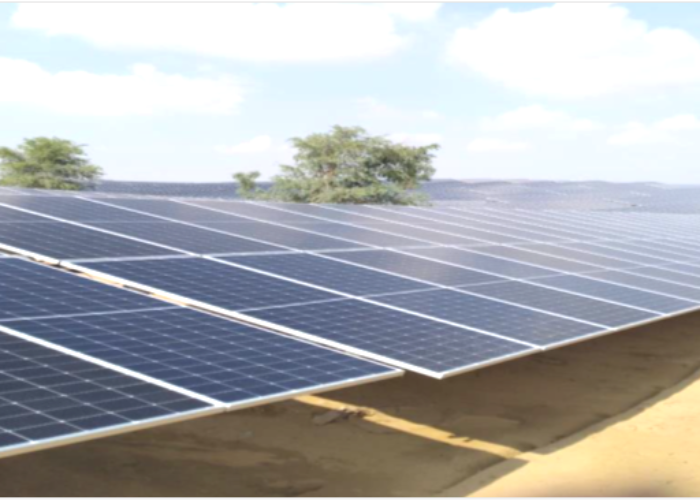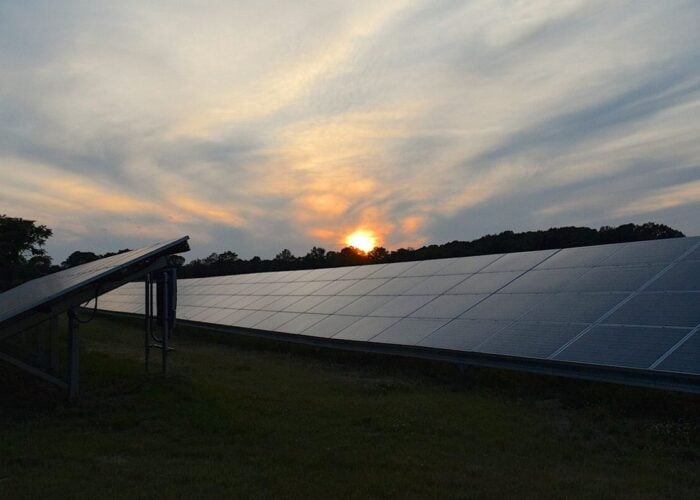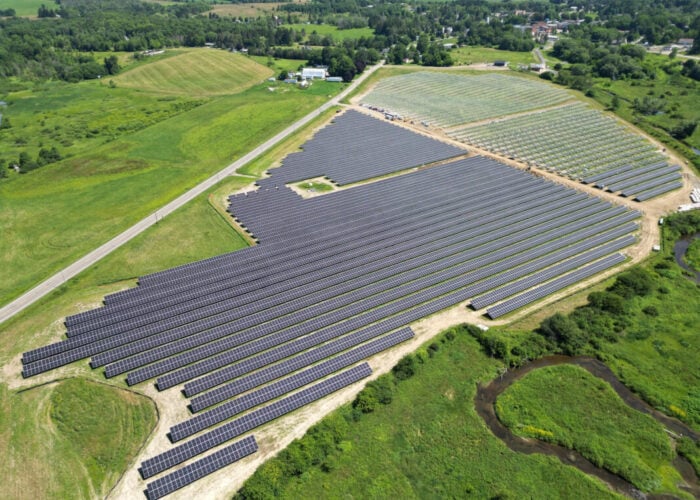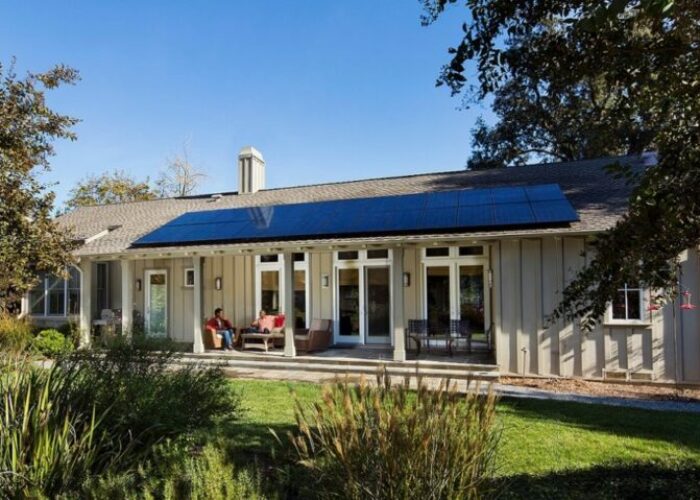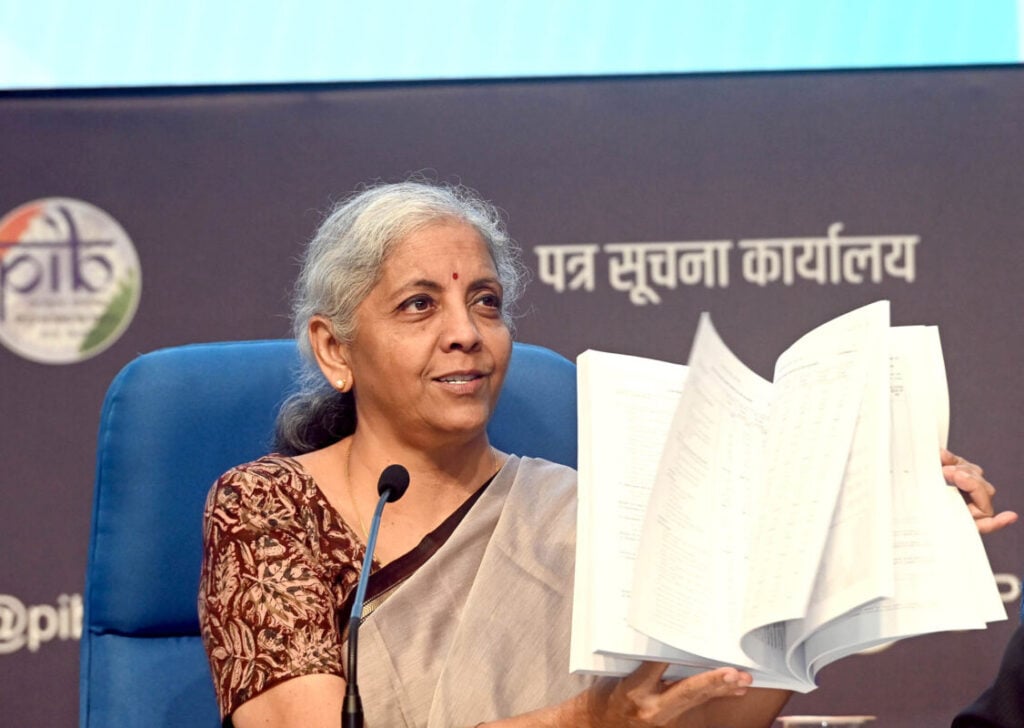
The Indian government has published its latest budget, which includes a plan to install new rooftop solar systems on ten million homes across the country.
Finance minister Nirmala Sitharaman launched the PM-Surya Ghar Muft Bijli Yojna, “Prime Minister’s Rooftop Solar: Free Electricity Scheme”, as part of the budget, a INR750 billion (US$8.9 billion) investment to support the installation of new rooftop solar projects. These systems will each have a capacity of up to 3kW.
Unlock unlimited access for 12 whole months of distinctive global analysis
Photovoltaics International is now included.
- Regular insight and analysis of the industry’s biggest developments
- In-depth interviews with the industry’s leading figures
- Unlimited digital access to the PV Tech Power journal catalogue
- Unlimited digital access to the Photovoltaics International journal catalogue
- Access to more than 1,000 technical papers
- Discounts on Solar Media’s portfolio of events, in-person and virtual
Or continue reading this article for free
The scheme builds on a similar package announced as part of an interim budget by the previous government in February. While this summer’s general election saw prime minister Narendra Modi, and figures such as Sitharaman, maintain their positions, Modi’s Bharatiya Janta Party (BJP) lost its overall majority, and he now heads up a coalition government.
The government’s latest scheme has withdrawn some support from the initial initiative offered in February, with the government now planning to cover just 60% of the costs of the programme.
However, the budget has made a number of commitments to renewable power more broadly, that will help support India’s energy transition. Sitharaman noted that the government will look to implement a policy to encourage greater adoption of pumped hydro storage, as India looks to realise its clean energy targets.
“The government’s commitment to increasing investment in renewable energy was evident through significant allocations for solar infrastructure development, and energy storage solutions,” said Gopal Kabra, founder and MD of Indian renewable power company GK Energy.
“Notably, the custom duty exemption on capital goods for solar cells and panels stands out as a pivotal move. This exemption is expected to lower production costs, making solar energy more affordable and accessible.”
Sitharaman also said that she would look to expand the list of goods exempt from restrictions put in place by the Approved List of Models and Manufacturers (ALMM).
The ALMM is a key part of India’s solar legislation, as it sets limits on the companies from which state-sponsored projects can source materials and components. The list was temporarily suspended in 2023 to encourage greater deployment of solar capacity, but reinstated earlier this year, as part of an effort to encourage policymakers in India to rely on Indian-made products in the energy transition.
This has led to some eye-catching manufacturing investments in India, such as Adani’s plans to build a 10GW manufacturing complex in the country, but in the short term, expanding the list of products exempt from ALMM limitations could help India meet its solar deployment goals in the short-term.
Industry support
The new budget has drawn considerable support from decision-makers in the Indian solar sector. Gyanesh Chaudhary, CMD of solar panel manufacturer Vikram Solar said the budget “has positioned India as a frontrunner in the global solar energy landscape.”
“This budget is a catalyst for the growth of the Indian solar industry, empowering millions of households with access to affordable and clean electricity,” added Chaudhary. “Moreover, by supporting ancillary sectors like pump storage and creating a conducive environment for innovation through tax incentives for solar cell and panel manufacturing, the budget has laid a robust foundation for India’s energy transition.”
Sameer Gupta, chairman and managing director of Indian energy and engineering company the Jakson Group agreed, drawing attention to the supportive financial frameworks now in place.
“The budget also prioritises infrastructure development with long-term interest-free loans to states and significant project allocations, enhancing connectivity, economic activities, and overall quality of life across the nation,” said Gupta. “Additionally, the simplified rules for foreign direct investment and overseas investment will open new avenues for global expansion, attract international investments, and enhance our global footprint.”
Gupta’s comments follow the World Bank’s provision of a US$1.5 billion loan to support the Indian energy transition earlier this year, and it is likely that financial support from both Indian and overseas actors will be necessary if the country is to meet its clean energy goals.
Sachidanand Upadhyay, MD at Lord’s Mark Industries, which works in small-scale solar installations, said that the budget will help capitalise on growing interest in rooftop solar installations across the country.
“With [12.8 million] registrations and [140,000] applications already recorded, this achievement reflects a robust public response and sets a promising precedent for sustainable energy adoption in India,” said Upadhay, referring to public support for the earlier version of the scheme introduced in February.
Deployment targets unmet, questions unanswered
The budget is the latest initiative to significantly expand the government’s support for clean power generation. Between the 2022-23 and 2023-24 budgets, the government’s investment in the solar sector in particular increased by 48%, as India looks to meet some of the targets for renewable power that it has already missed.
In 2014, Modi’s BJP government announced a target of installing 40GW of rooftop solar by 2022, as part of a plan to reach 100GW of installed capacity. However, As of 2023, rooftop solar accounted for just 11GW of capacity, with total installed solar capacity at 73GW. While the rate of installations in India’s solar sector has increased dramatically, with new capacity additions increasing by a mammoth 400% in the first quarter of this year, significant effort will be needed if India is to come close to meeting its deployment targets set a decade ago.
There are also questions pertaining to the Indian supply chain and research and development (R&D) investment. At a Solar Media webinar held earlier this year, Rahul Bhutiani, global chief marketing officer of Adani Solar, noted that Adani expects to export as much as 5GW of products, out of a manufacturing capacity of 10GW, due to concerns from overseas buyers that Indian manufacturers would be able to deliver products quickly.
Last week, ahead of the publication of the budget, Vibhuti Garg, director for South Asia at the Institute for Energy Economics and Financial Analysis, also noted that India’s investment into deployment has far outstripped its investment into R&D, and that more money must be put into the latter field to help create a holistic solar sector.
“Ideally, the government should encourage manufacturers with an annual production capacity of less than 1GW to invest at least 3-5% of their gross revenue in R&D,” wrote Garg. “Further, it should push other manufacturers to invest 1-2% of their gross revenue in R&D. Similar provision should be made for other technologies.”


